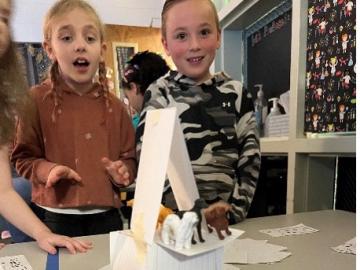Filter News
Area of Research
- (-) Biology and Environment (102)
- Advanced Manufacturing (5)
- Biological Systems (1)
- Biology and Soft Matter (4)
- Building Technologies (2)
- Chemical and Engineering Materials (3)
- Chemistry and Physics at Interfaces (7)
- Clean Energy (168)
- Climate and Environmental Systems (7)
- Computational Biology (1)
- Computational Chemistry (5)
- Computational Engineering (1)
- Computer Science (3)
- Data (1)
- Earth Sciences (1)
- Electricity and Smart Grid (1)
- Energy Frontier Research Centers (7)
- Fuel Cycle Science and Technology (2)
- Functional Materials for Energy (8)
- Fusion and Fission (32)
- Fusion Energy (7)
- Geographic Information Science and Technology (1)
- Isotopes (21)
- Materials (122)
- Materials for Computing (13)
- Materials Synthesis from Atoms to Systems (8)
- Materials Under Extremes (7)
- National Security (45)
- Neutron Data Analysis and Visualization (2)
- Neutron Science (72)
- Nuclear Science and Technology (27)
- Quantum Condensed Matter (3)
- Quantum information Science (4)
- Renewable Energy (2)
- Sensors and Controls (2)
- Supercomputing (153)
- Transportation Systems (4)
News Type
News Topics
- 3-D Printing/Advanced Manufacturing (2)
- Artificial Intelligence (5)
- Big Data (7)
- Bioenergy (26)
- Biology (42)
- Biomedical (9)
- Biotechnology (6)
- Chemical Sciences (3)
- Clean Water (8)
- Climate Change (23)
- Composites (1)
- Computer Science (11)
- Coronavirus (5)
- Decarbonization (15)
- Energy Storage (2)
- Environment (57)
- Exascale Computing (4)
- Frontier (3)
- High-Performance Computing (12)
- Hydropower (5)
- Machine Learning (5)
- Materials (1)
- Materials Science (2)
- Mathematics (3)
- Mercury (6)
- Microscopy (7)
- Nanotechnology (2)
- National Security (2)
- Net Zero (1)
- Neutron Science (1)
- Physics (1)
- Polymers (1)
- Renewable Energy (1)
- Security (1)
- Simulation (9)
- Summit (7)
- Sustainable Energy (17)
Media Contacts

The public is invited to six nature walks designed to highlight not only the rich flora and fauna diversity of the Oak Ridge Reservation, but also to demonstrate the work being done to sustainably manage and conserve this valuable resource.

Nine engineers from ORNL visited 10 elementary and middle school classrooms in three school districts during National Engineers Week, Feb. 21 to 24, 2023, describing and demonstrating the excitement of the engineering profession to more than 300 Tennessee students.

ORNL is teaming with the National Energy Technology Laboratory to jointly explore a range of technology innovations for carbon management and strategies for economic development and sustainable energy transitions in the Appalachian region.

The Center for Bioenergy Innovation has been renewed by the Department of Energy as one of four bioenergy research centers across the nation to advance robust, economical production of plant-based fuels and chemicals.

Scientists at ORNL have confirmed that bacteria-killing viruses called bacteriophages deploy a sneaky tactic when targeting their hosts: They use a standard genetic code when invading bacteria, then switch to an alternate code at later stages of
The Autonomous Systems group at ORNL is in high demand as it incorporates remote sensing into projects needing a bird’s-eye perspective.

Joanna Tannous has found the perfect organism to study to satisfy her deeply curious nature, her skills in biochemistry and genetics, and a drive to create solutions for a better world. The organism is a poorly understood life form that greatly influences its environment and is unique enough to deserve its own biological kingdom: fungi.

Environmental scientists at ORNL have recently expanded collaborations with minority-serving institutions and historically Black colleges and universities across the nation to broaden the experiences and skills of student scientists while bringing fresh insights to the national lab’s missions.

Hydrologist Jesús “Chucho” Gomez-Velez is in the right place at the right time with the right tools and colleagues to explain how the smallest processes within river corridors can have a tremendous impact on large-scale ecosystems.

Erica Prates has found a way to help speed the pursuit of healthier ecosystems by linking the function of the smallest molecules to their effects on large-scale processes, leveraging a combination of science, math and computing.




